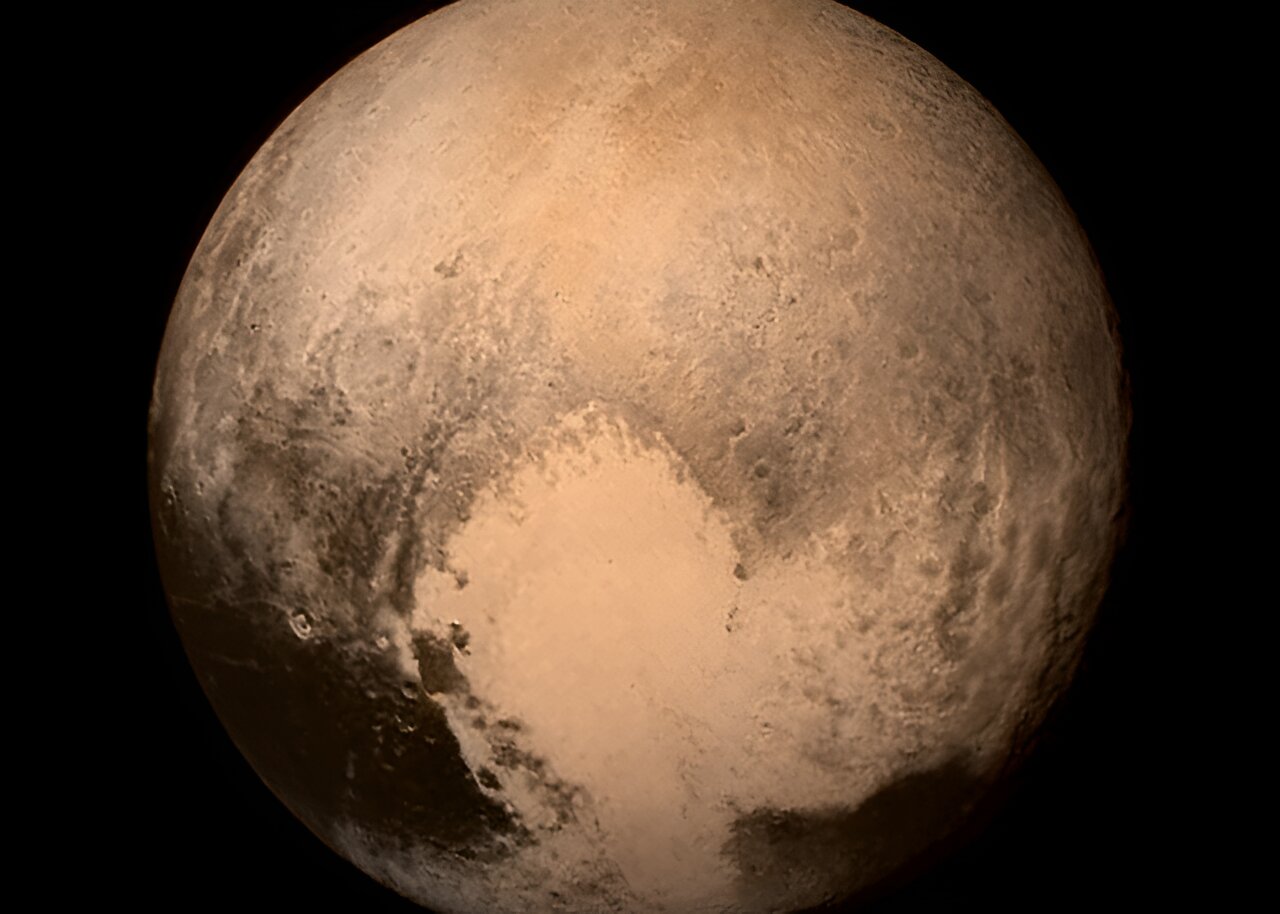Planetary scientists suggest that there is an ocean of liquid water on Pluto. In a recently published study, they tried to understand what it might look like.

New calculations by scientists
A hypothetical ocean of liquid water deep beneath Pluto‘s icy surface has come into the light thanks to new calculations by Alex Nguyen, a graduate student in the Faculty of Earth, environmental and planetary sciences in Arts & Sciences at Washington University in St. Louis.
In an article published in the journal Icarus, Nguyen used mathematical models and images from the New Horizons spacecraft, which flew past Pluto in 2015, to get a closer look at the ocean, which probably covers the planet under a thick shell of nitrogen, methane and water ice.
For decades, planetary scientists have assumed that Pluto cannot support the ocean. The surface temperature is about -220°C, it is so cold that even gases such as nitrogen and methane freeze solid. The water doesn’t stand a chance.
But in recent years, prominent scientists, including William B. McKinnon, a professor of Earth, environmental and planetary sciences at Arts & Sciences, have collected evidence that liquid water may indeed be under the ice of a dwarf planet.
This conclusion is based on several proofs, in particular, on the cryovolcanoes of Pluto, spewing ice and water vapor. Although some debate is still ongoing, according to Nguyen, the existence of an ocean beneath the surface of Pluto is widely recognized.
Exploring the ocean of Pluto
A new study looks at the ocean in more detail, even if it is too deep under the ice for scientists to see it. Nguyen and McGovern have created mathematical models to explain cracks and bulges in the ice covering Pluto’s Sputnik Platina Basin. It was formed as a result of a collision with a giant meteorite billions of years ago.
Their calculations show that the ocean in this area exists under a shell of water ice with a thickness of 40 to 80 km. This protective blanket keeps the ocean from freezing.
The scientists also calculated the likely density or salinity of the ocean based on cracks in the ice above. According to their estimates, Pluto’s ocean is no more than 8 percent denser than seawater on Earth, or about the same as the Great Salt Lake in Utah. If you could somehow get to the ocean of Pluto, you could swim effortlessly.
According to Nguyen, this level of density explains the large number of cracks on the surface. If the ocean were significantly less dense, the ice shell would collapse, creating many more cracks than we actually observed.
If it were denser, there would be fewer cracks. “We estimated a sort of Goldilocks zone where the density and shell thickness is just right,” the researcher said.
Space agencies don’t plan to return to Pluto in the near future, so many of its secrets will remain for future generations of researchers. No matter if it is called a planet, a planetoid, or just one of the many objects in the outer regions of the Solar System, it is worth exploring.
According to phys.org


